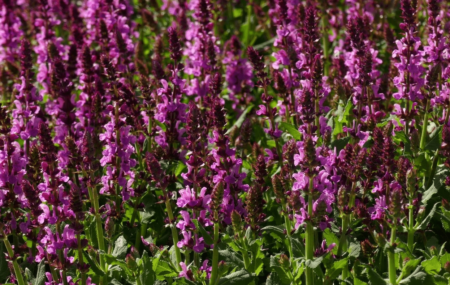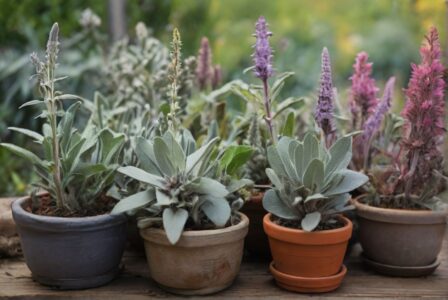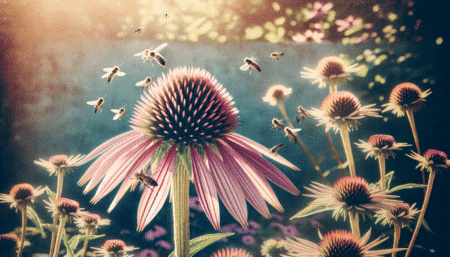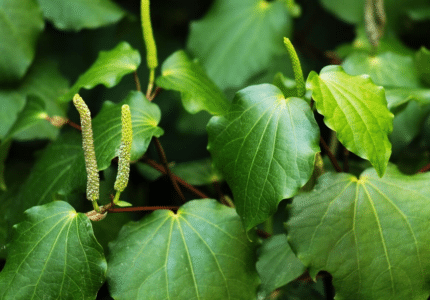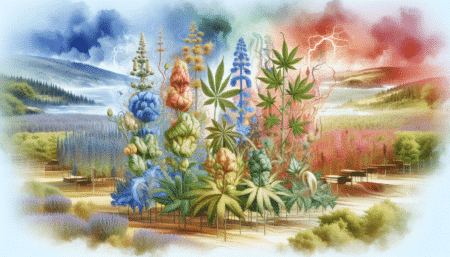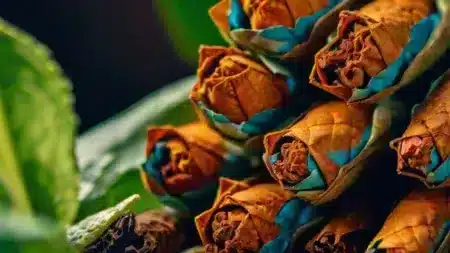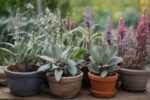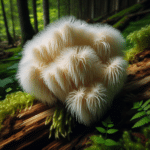- Introduction
- History and distribution
- Botanical characteristics
- Ecological significance
- Cultivation and care
- Medical and cultural use
- Conclusion
Here you can find our Salvia recognita seeds!
1. introduction
Salvia recognitaalso known as Turkish cliff sage or Turkish rock sage, is a plant species that is endemic to central Turkey and is known for its delicate pink flowers. As a member of the Lamiaceae and the genus Salvia, this plant is characterized by its adaptability and its particular aesthetic appearance [1] [2]. The plant thrives well in full sunlight and well-drained soil and is an excellent choice for xeric gardens, making it particularly attractive to gardeners looking for drought tolerance [3].
In this article, we'll take an in-depth look at Salvia recognita, from its history and distribution to its cultivation, care and ecological importance. We'll also explore the medicinal and cultural uses of this remarkable plant, addressing the challenges its cultivation can present, such as its sensitivity to moisture and preference for a non-crowded location. Furthermore, we will examine why Salvia seeds, particularly those of Salvia recognita, are sought after worldwide and how they affect the diversity of Salvias and the cultivation of pink-flowered plants [4] [6].
2. history and distribution
- First publication and home region
- Systematics and distribution
- The genus Salvia is not monophyletic and consists of three unrelated clades. The stamen-lever mechanism typical of Salvia has evolved independently in each clade [7]. With around 850 to over 900 species, the genus Salvia distributed worldwide, with the exception of Antarctica and Australia. The genus is particularly diverse in Central and South America with around 500 species and in the Mediterranean region to Central Asia with around 250 species [7]. The species of the genus Salvia are found in a wide range of habitats, from deserts to forests and high mountains [9].
- Specific distribution of Salvia recognita
3. botanical characteristics
Salvia recognita, known as Turkish cliff sage, is characterized by a variety of botanical features that make it interesting for both gardeners and botanists:
- Scientific and common nameThe plant is scientifically known as Salvia recognita and is popularly known as Turkish cliff sage [3].
- Plant type and familyIt is a perennial, herbaceous plant from the Lamiaceae family, which belongs to the labiate family [3].
- Size and growth habitSalvia recognita reaches a height of 30 to 42 inches and a width of 12 to 36 inches. It grows as a bushy, semi-evergreen perennial with medium green, fragrant leaves and pink lipped flowers that have sepals and stems marked from dark pink to red in summer [3] [13] [14].
The leaves form a small to medium sized basal rosette. They vary in size from 3-4 inches to nearly 1 foot long, with three or more leaflets per leaf. The leaves are bright green and densely hairy, giving them a gray coloration and thick texture. Each petiole is wine red in color [1]. The flowers are cyclamen pink, grow in whorls and the calyxes are covered with glands and hairs. The flower stems reach a length of 2-3 feet and bear many whorls of widely spaced flowers [1].
4. ecological significance
The ecological importance of Salvia recognita cannot be overestimated, especially with regard to its role as a Food source for pollinators and as a component of many ecosystems [9].
- Food source for pollinators:
- Salvia recognita is attractive to a variety of pollinators, including bees, butterflies, hummingbirds and beneficial insects, highlighting its essential role in maintaining biodiversity and ecosystem health [5] [11] [13].
- The plant is listed on the RHS list of plants for pollinators, further highlighting its importance for pollination [13].
- Contribution to biodiversity and ecosystem health:
- By providing nectar and pollen for various pollinators such as bees, butterflies and hummingbirds, Salvia recognita contributes to biodiversity and the health of ecosystems [11].
- The flowers of Salvia recognita, which are particularly attractive to bees and butterflies, play a central role in pollinator dynamics [14].
- Adaptation to warmer climates and water-saving landscaping:
5. cultivation and care
Salvia recognita thrives best under certain conditions that should be taken into account for successful cultivation and care:
- Location and soil conditions:
- Planting and propagation:
- Care instructions:
6. medical and cultural use
Salvia recognita, also known by cultural names such as rosemary sage, scarlet sage or pink sage, has a rich historical and medicinal significance in various cultures. The plant has traditionally been used in indigenous American and Mexican cultures for ceremonial and medicinal purposes [15].
- Medical applications:
- Cultural use:
The chemical diversity within the genus Salvia, including Terpenes, Flavonoids and phenolic acids, contributes to their wide range of medical and cultural applications [9]. However, it is important to be aware of the legal situation in different countries and to observe local regulations, as Salvia recognita may be regulated in some regions [16].
7 Conclusion
Salvia recognita, as a unique plant with its deep-rooted historical and cultural significance as well as its ecological benefits, represents an invaluable contribution to biodiversity and garden culture. Its adaptability and drought tolerance make it an ideal candidate for sustainable landscaping, while its aesthetic beauty and attraction to pollinators delight plant lovers and ecologists alike. The many possible applications, whether in medicine or cooking, open up a wide range of uses and underline the importance of conserving this species.
Recognizing the need for further research and exploring new cultivation methods could help to further strengthen the cultural and medicinal role of Salvia recognita and expand its ecological presence. The hope remains that increasing awareness and appreciation of Salvia recognita will lay the foundation for its long-term protection and sustainable use. This confirms once again that the plant world not only forms the basis of our ecosystem, but also enriches our lives in many ways.
Since there are no "People Also Ask" questions and answers in the input, I cannot create rephrased FAQs. If you have questions and answers about Salvia recognita, please post them and I will be happy to help you.
Related links to Salvia recognita
- https://en.wikipedia.org/wiki/Salvia_recognita
- https://de.wikipedia.org/wiki/Salvinorine
- https://pubmed.ncbi.nlm.nih.gov/28722248/
References
[1] – https://en.wikipedia.org/wiki/Salvia_recognita
[2] – https://powo.science.kew.org/taxon/urn:lsid:ipni.org:names:457090-1
[3] – https://www.olddairynursery.com/perennials/p/salvia-recognita
[4] – https://www.salviaspecialist.com/catalog/salvias-r/recognita/
[5] – https://odysseyplants.com/salvia-recognita-hybrid/
[6] – https://www.etsy.com/listing/1139024825/salvia-recognita-10seedshardy-perennial
[7] – https://de.teknopedia.teknokrat.ac.id/wiki/Salbei
[8] – https://de.wikipedia.org/wiki/Salbei
[9] – https://www.gbif.org/species/100431589
[10] – https://www.jelitto.com/Seed/Perennials/SALVIA+recognita+Portion+s.html
[11] – https://plantlust.com/plants/57822/salvia-recognita/
[12] – https://shop.plantlust.com/products/salvia-recognita
[13] – https://www.rhs.org.uk/plants/74360/salvia-recognita/details
[14] – https://www.hooksgreenherbs.com/salvia-recognita-sage-recognita-buy-herb-plant-online/
[15] – https://awb.saw-leipzig.de/AWB?lemid=H00564
[16] – https://www.quora.com/Is-Salvia-recognita-banned-in-any-European-countries
[17] – https://www.ncbi.nlm.nih.gov/pmc/articles/PMC8838292/

